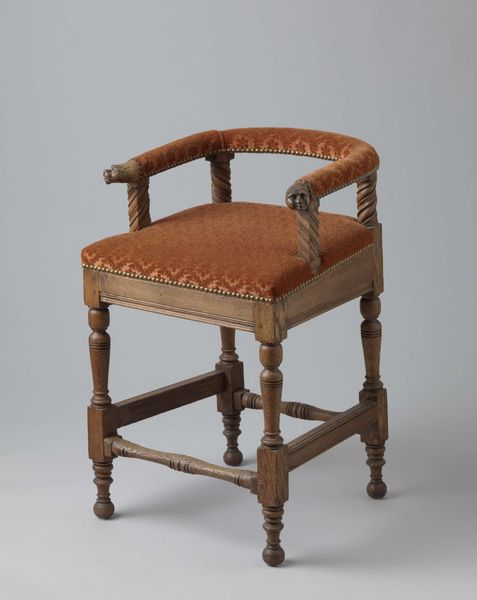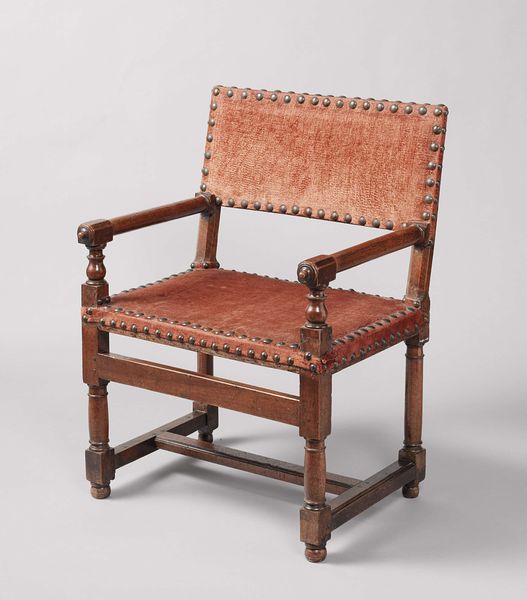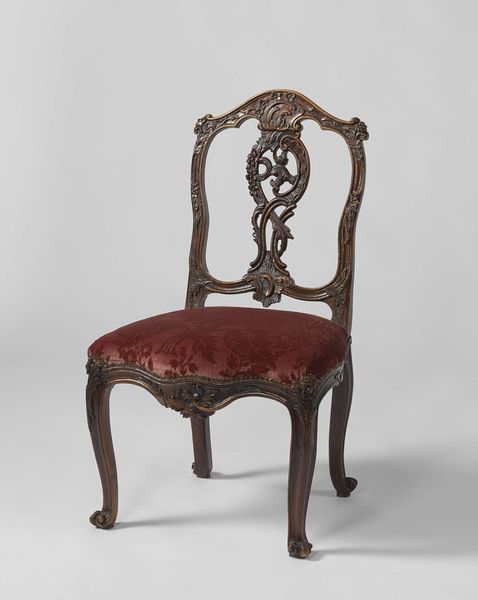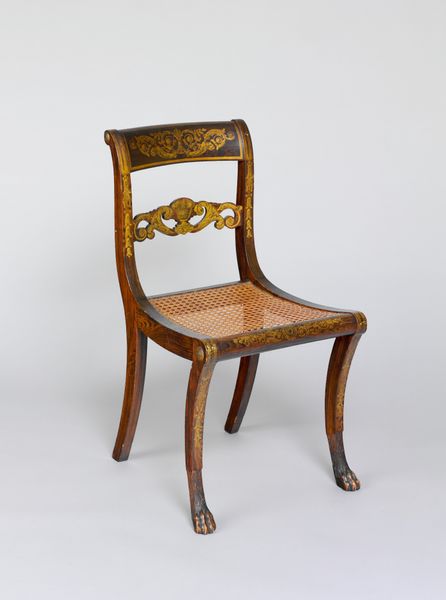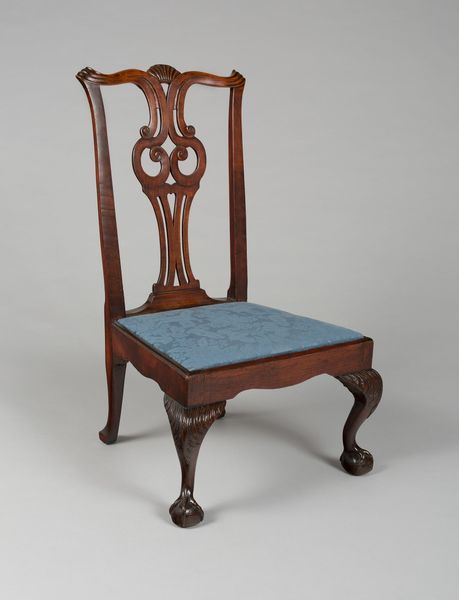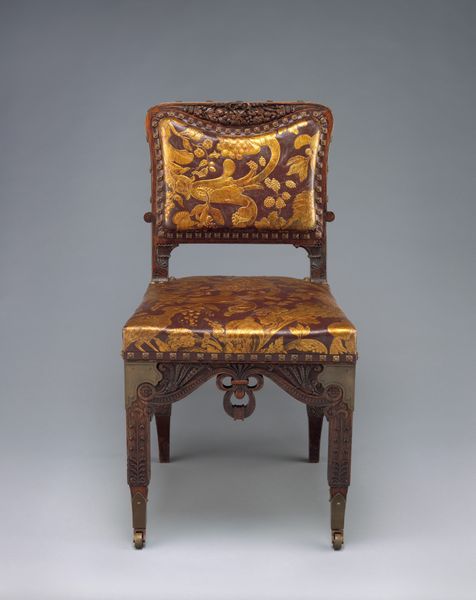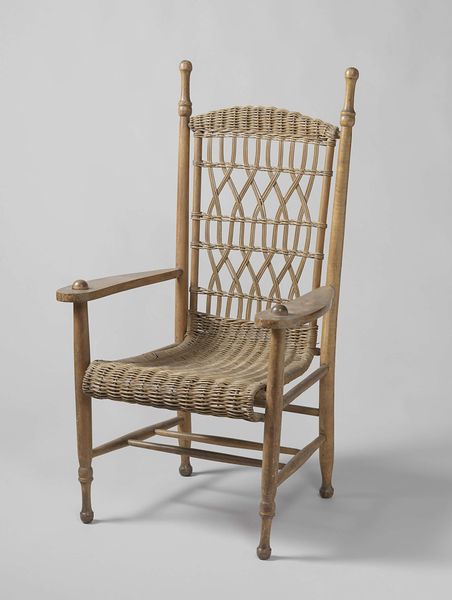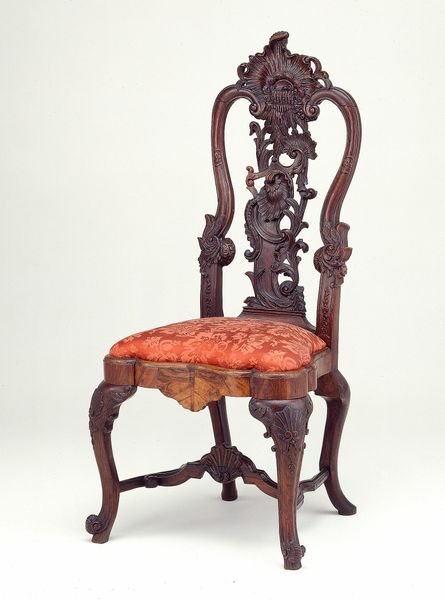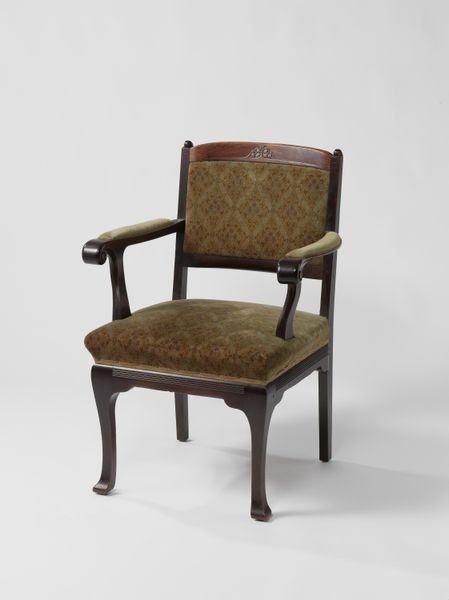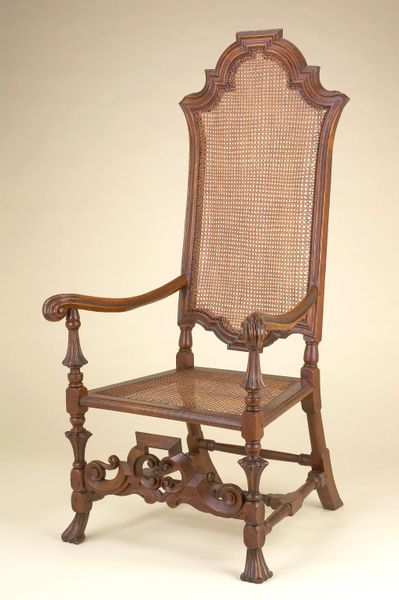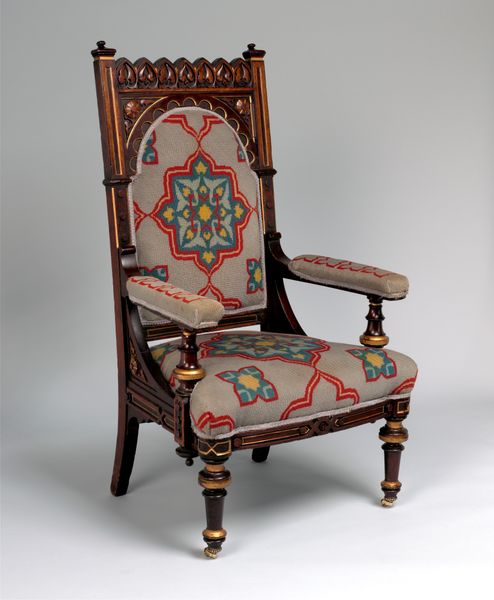
textile, wood
#
medieval
#
furniture
#
textile
#
wood
#
decorative-art
Dimensions: height 92.0 cm, width 53.0 cm, depth 48.0 cm
Copyright: Rijks Museum: Open Domain
Editor: Here we have Pierre Cuypers' "Armstoel bekleed met rode trijp," created around 1860. It's currently housed at the Rijksmuseum and made from wood and textile. The dark red upholstery and straight lines of the chair give it a very regal feel, but I'm unsure how all the parts of the composition create a whole. What do you see when you look at this piece? Curator: I am drawn to the interplay between the structural elements and the surface ornamentation. The wooden frame provides a rigid geometry, softened by the curvilinear motifs on the seat's lower edge and the back's textile. The fringed detail offers textural complexity but is bound by a very specific and recurring size interval. How does this relationship affect your understanding of the overall design? Editor: It's true; it creates this balance of solid versus soft. The shapes of the legs also play into that contrast. I guess I was more focused on the color scheme than how shape contributes. The visual weight seems mostly anchored by the darker shades and then it goes up from there. It almost makes the legs feel more delicate. Curator: Precisely. The artist deliberately juxtaposes different material properties and surface treatments to generate an intriguing visual experience. Examine how the dark textile both absorbs and reflects light. Does it suggest the potential for volume? And what could that added depth suggest? Editor: So the chair has these strong geometric and stylistic elements that have a life of their own and they work independently? Like, you can separate and contrast different elements of it to understand how it’s made? I guess in terms of art, breaking down all these elements to their fundamental truths actually says a lot about how something should look. Curator: Precisely. Analyzing its components reveals a deliberate strategy aimed to trigger various effects within our experience, enhancing, therefore, its totality as a constructed item and work of art. Editor: Right, I can see how deconstructing and understanding the relationships and visual aspects help to unpack an artwork and its effects. Thank you.
Comments
No comments
Be the first to comment and join the conversation on the ultimate creative platform.
